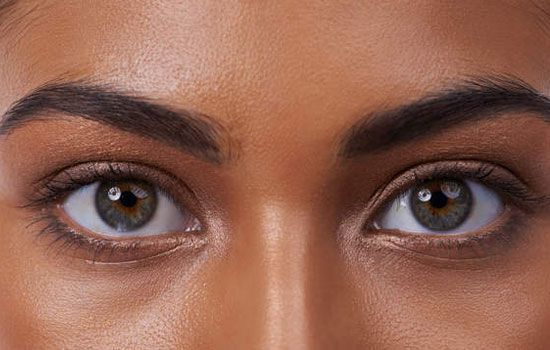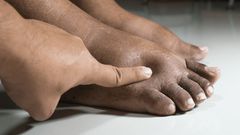Efforts to combat preventable vision loss have taken centre stage in Africa as the World Health Organization (WHO) pushes for the integration of eye care within mainstream health systems. On World Sight Day, observed annually on October 9, the WHO Regional Director for Africa, Dr. Mohamed Janabi, issued a compelling call to action, urging governments across the continent to ramp up investments, craft robust policies, and implement targeted strategies that would make quality eye care accessible to all, especially underserved communities.
World Sight Day is not just another awareness campaign—it’s a rallying point for individuals, communities, and policymakers to recognise how crucial vision is to overall well-being. Dr. Janabi emphasised that millions in Africa are still grappling with vision impairment and blindness, conditions that are largely preventable or treatable if action is taken early. According to the WHO, the Caribbean and sub-Saharan Africa remain among the world’s hardest-hit regions, where many lack vital eye care services due to limited resources and weak healthcare infrastructure.
Shocking statistics highlight the scale of the problem. As reported by Dr. Janabi, only 32% of WHO Member States in Africa had, by 2021, established national policies directly addressing vision loss and blindness. This points to a persistent gap in eye health prioritisation at the policy level, leaving millions at risk and many more without access to proper eye care. For Nigeria and neighbouring West African nations, this statistic is a wake-up call to reinforce their health agendas and invest strategically in eye health.
“This limited policy coverage reflects broader challenges in resource allocation and health planning for eye care,” Dr. Janabi stated. He stressed that the minimal scope of existing services is only a fraction of what is required to meet Africa’s growing eye health needs. For example, in the African Region, effective cataract surgery coverage stands at an alarming 26%—in other words, just one in four people who need cataract surgery experience good visual outcomes following the procedure. Meanwhile, approximately 30% of those needing glasses or refractive error correction actually receive the necessary care.
The implications stretch far beyond health. Poor vision limits educational opportunities for children, decreases productivity among the workforce, and curtails employment chances for adults. “Good vision contributes immeasurably to education, personal development, and economic productivity,” Dr. Janabi remarked, noting that without increased intervention, Africa’s rates of avoidable vision impairment will continue to climb, burdening families and communities already facing economic hardship.
Progress, however, has been made. Many African countries, including Nigeria and Ghana, have seen reductions in blinding diseases such as trachoma, onchocerciasis (river blindness), and vitamin A deficiency through coordinated preventive campaigns, improved sanitation, and widespread distribution of medication. Yet the WHO warns that new threats are on the horizon. The rise in non-communicable diseases like diabetes, increased consumption of poor diets, sedentary lifestyles, and an ageing population are reportedly fuelling higher rates of cataract and vision-impairing conditions across West Africa.
To confront these challenges, Dr. Janabi highlighted several global initiatives designed to boost eye care. Vision 2020: The Right to Sight, a partnership between the WHO and the International Agency for the Prevention of Blindness, set ambitious goals to eliminate avoidable blindness by scaling up sustainable, affordable services and empowering local eye care workforces. While this initiative laid a solid foundation, many countries are still lagging behind the targets set for 2020, demonstrating a need for renewed commitment.
Further momentum was built with the World Health Assembly’s 2021 resolution WHA74(12), which called on all countries to pursue integrated, people-centred eye care by 2030. The resolution aims for a 40 percentage point increase in effective coverage of refractive errors, such as nearsightedness and farsightedness, and a 30 percentage point rise in effective cataract surgery coverage worldwide by the decade’s end.
Additionally, the newly launched SPECS 2030 initiative—introduced by WHO in June 2024—sets its sights on universal access to affordable refractive error services, namely glasses and contact lenses, by 2030. “The initiative seeks to improve service delivery, reduce costs, expand the eye care workforce, raise public awareness, and strengthen national data systems,” Dr. Janabi detailed.
Currently, eight African countries are piloting the SPECS 2030 programme. Some, like Ghana and Kenya, have already begun engaging stakeholders, designing national strategies, and preparing to implement wide-reaching reforms, while others are in the formative stages of planning. In Nigeria—Africa’s most populous nation—eye health experts such as Dr. Ngozi Nwosu (Lagos University Teaching Hospital) stress the importance of grassroots involvement: “National policies are critical, but true progress will only come if these initiatives reach those in rural and hard-to-reach communities.”
Despite encouraging signs, serious challenges remain. Financial constraints, urban-rural disparities, cultural beliefs about disability, and low public awareness continue to limit equal access to eye care in Nigeria, Ghana, and other West African states. The cost of surgery or glasses is prohibitive for many; in remote villages, eye care specialists and optical shops are virtually nonexistent.
In response, the WHO has urged African governments to intensify action in line with the latest global policy—resolution WHA78.7—which presses Member States to incorporate sensory care into their health benefit packages and ensure consistent funding for such vital interventions. Countries are further encouraged to:
- Expand training and deployment of eye health professionals.
- Incorporate sensory health indicators into national health data and surveillance systems.
- Develop inclusive, context-specific strategies based on WHO technical guidelines.
- Leverage diagnostic tools like WHO Eyes—a free mobile app for vision screening—and standard analysis frameworks for advocacy and policy support.
Local organisations, such as the Nigerian Optometric Association and Sightsavers Nigeria, advocate for closer government collaboration and awareness campaigns that leverage radio, community leaders, and religious networks. “No one should lose their sight just because they’re poor, or because eye care is too far from home,” said Dr. Abubakar Ibrahim, a federal health policy adviser.
World Sight Day, Dr. Janabi urged, must be used as a platform for governments and non-governmental groups to promote early detection, fight stigma, and build the confidence of people living with vision and sensory impairments. By supporting community-based screening, reducing the cost of essential treatments, and educating the public, West African nations can break the cycle of preventable blindness and improve opportunities for millions.
For everyday Nigerians and Ghanaians, the call to action is clear: take eye health seriously, seek regular check-ups, and support local initiatives aimed at ending avoidable blindness. Sight-saving solutions exist—what’s needed now is collective will and sustainable action.
How has vision health impacted you or your community? What steps do you think governments and partners should take to ensure everyone gets the eye care they deserve? Drop your thoughts in the comments and stay tuned for more updates on health initiatives.
We’d love to hear from you! Email us at story@nowahalazone.com to get your story featured or to discuss story sales.
For general support, contact us at support@nowahalazone.com.
Connect with us on Facebook,
X (Twitter), and
Instagram for the latest news and updates!










